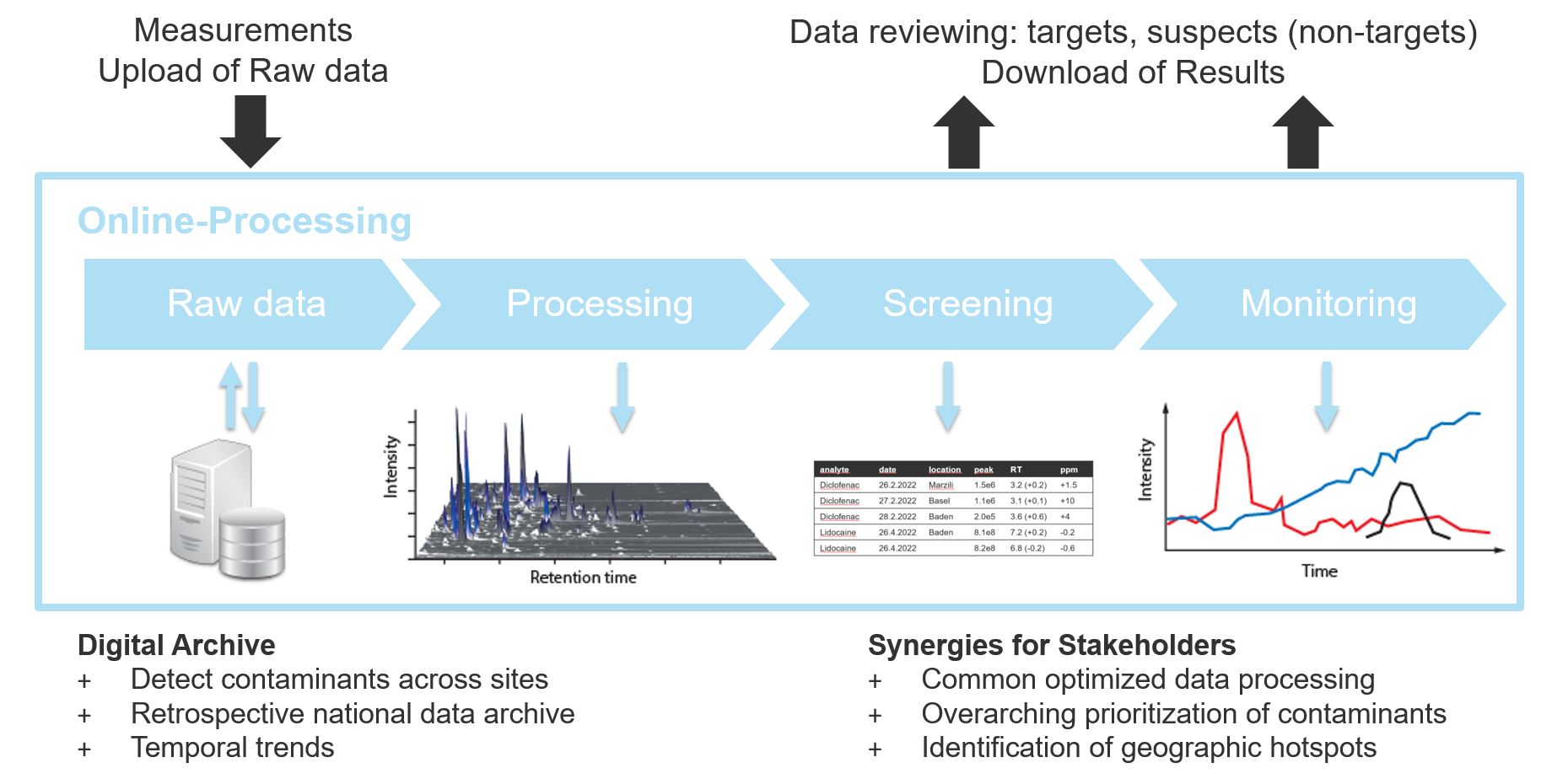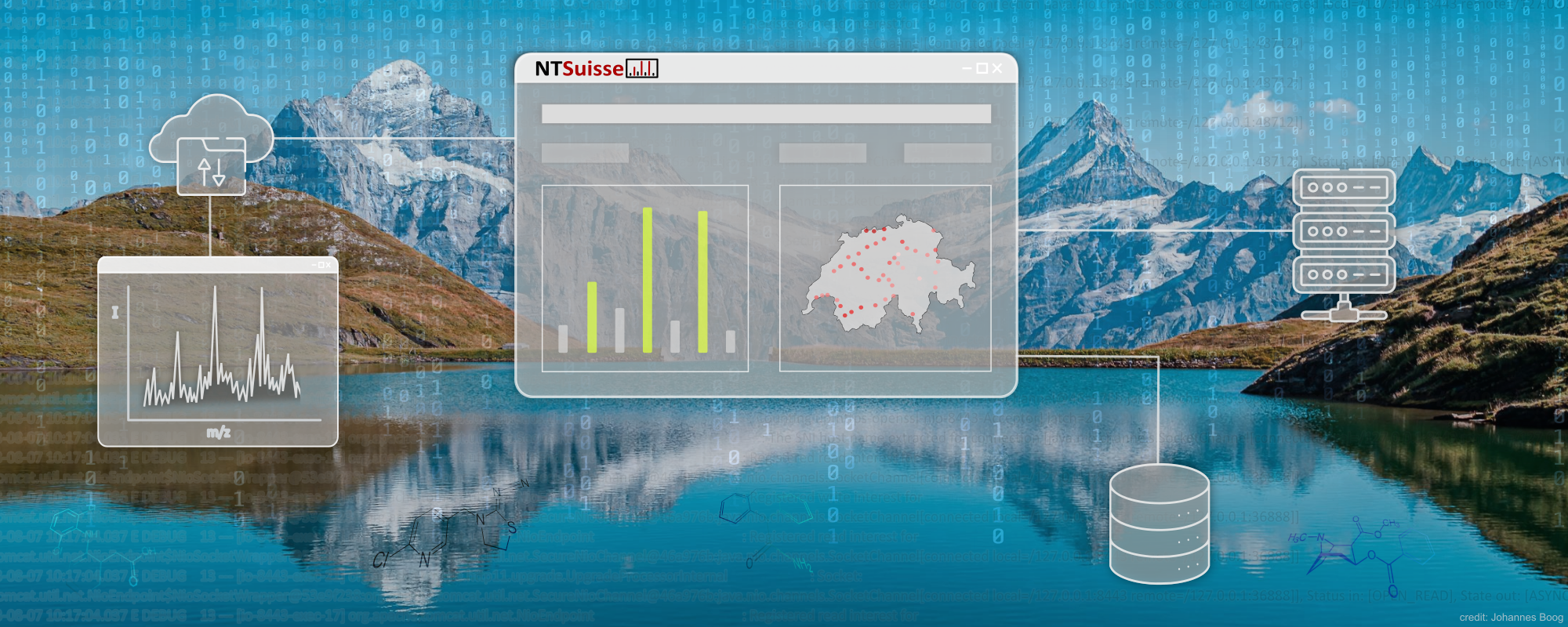The NTSuisse Project
Introduction
Organic micro pollutants such as pesticides, pharmaceuticals, and industrial by-products pose a significant threat to surface water bodies and human health. To identify potential risks to human and environmental health and to comprehensively assess Switzerland’s surface water quality the cantonal environmental protection laboratories and water suppliers of the cantons conduct annual monitoring campaigns. There is a concern about whether the current spectrum of substances being investigated adequately represents surface water quality. To address this, Liquid Chromatography High-Resolution Mass Spectrometry (LC-HRMS) offers analytical capabilities for known (targets) as well as suspected (suspects) and unknown substances (non-targets) (Figure 1). However, the analysis of LC-HRMS measurements depends on the laboratory’s specific analytical methodology and requires a substantial amount of data processing and storage. The participating laboratories are working on the harmonization of their methods to achieve comparable measurement data, allowing for central analyses across data from various measurement sequences and different laboratories. Currently, facilities for central data processing and analysis do currently not exist in Switzerland.

Goals of NTSuisse
The goal of NTSuisse is to create a national LC-HRMS surface water data processing and analysis platform accessible to participating cantons, water suppliers, expert bodies, and the federal government. The platform will automate the analysis of LC-HRMS data generated in various laboratories, enabling semi-quantitative screening of approximately 600 substances (target screening). This will significantly reduce personnel resources required for similar analyses currently performed by cantonal bodies and water suppliers. Moreover, the project aims to establish functionality for retro-spective screening, temporal trend detection and to identify geographical contamination hotspots. Overall, the project’s outcomes will enhance water quality monitoring and provide a more comprehensive understanding of chemical pollution in Swiss waters. The goals of the project will be put into practice by focusing on the following three pillars:
- Develop a processing and analysis platform for Swiss LC-HRMS surface water data
- Capacity building: train stakeholders in using the platform
- Cooperation between cantonal, federal and research institutions
LC-HRMS Surface Water Data Platform
Users will be able to upload LC-HRMS raw measurement data to the platform and process it online using a specified workflow (Figure 2). The processed data will be screened based on a defined and extendible list of target substances to determine the presence of specific substances across samples or monitoring stations from all the participating labs across Switzlerland. Raw measurement data and screening results will be stored on the platform for potential retrospective screening using updated substance lists. This allows stakeholders to evaluate surface water quality across time and to build a national LC-HRMS data archive. Capabilities for temporal and spatial trend detection will enable stakeholders to identify contamination hotspots in Swiss surface waters and to plan future monitoring campaigns accordingly.

